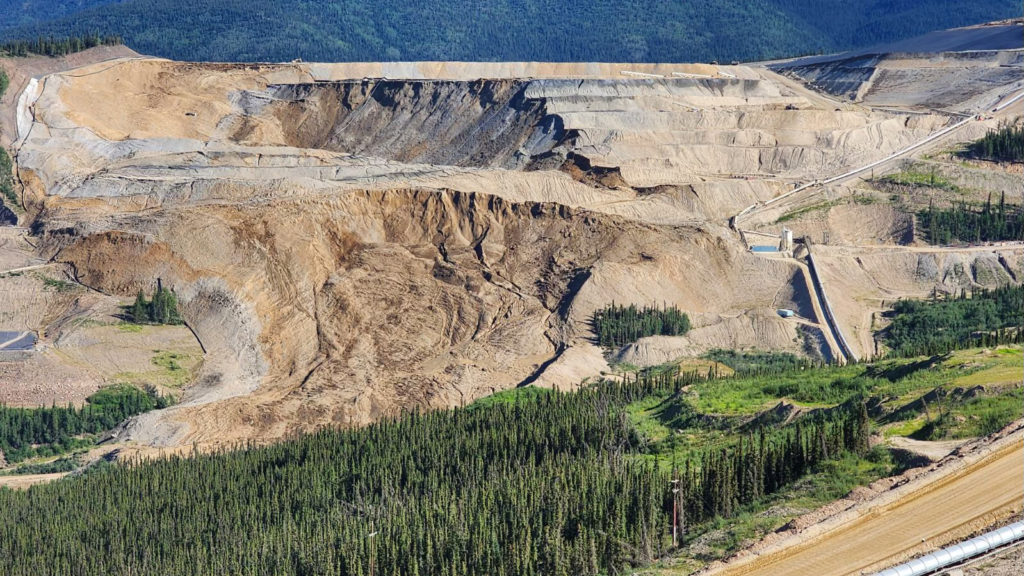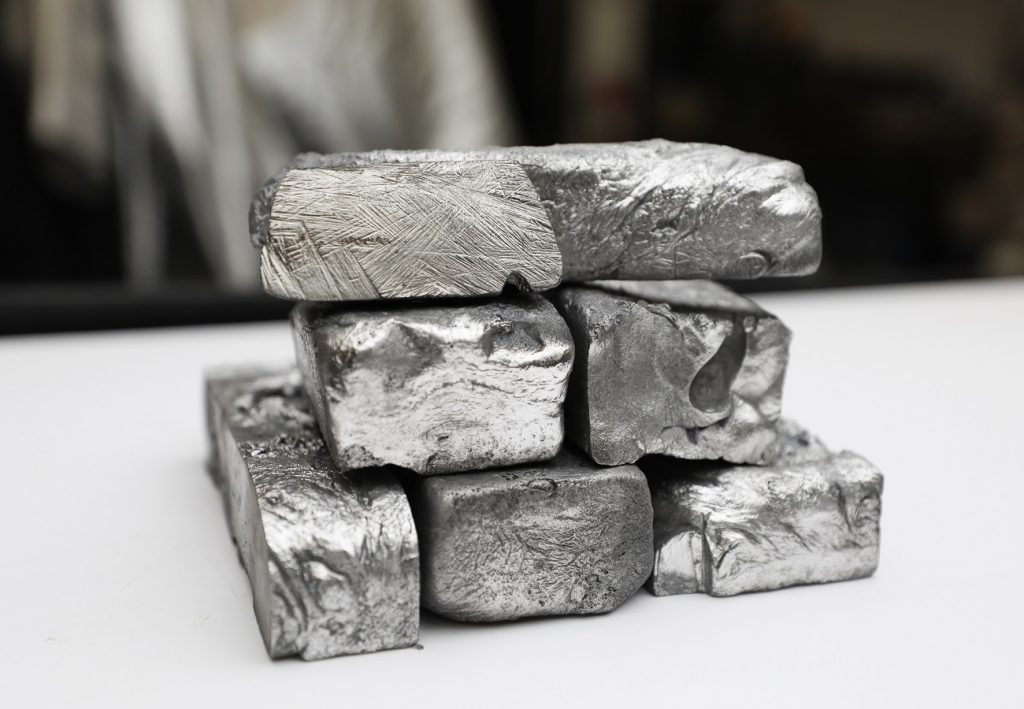Yukon hires contractors to aid Eagle cleanup

The Yukon government is taking over more tasks in the cleanup effort at Victoria Gold’s (TSXV: VGCX) Eagle mine, as the company has missed more conditions of the remediation plan.
The government has hired contractors to build a protective berm under the unstable slope at Eagle to make a safe area to drill groundwater wells, Lauren Haney, deputy minister for Yukon’s Department of Energy, Mines and Resources (EMR), said in a news briefing on Friday.
“I wouldn’t frame this as a repercussion, but it is a result of the company not complying with those directions that we are stepping in to undertake construction of the berm ourselves,” Haney said.
The move comes just over one month after Victoria halted operations at Eagle after a failure of its heap leach pad caused a landslide that unleashed 4 million tonnes of material, with half leaving the pad’s containment. Between 280,000 and 300,000 cubic metres of cyanide-containing solution left the containment, according to government estimates. Victoria’s share price plummeted more than 85% during the last week of June. The single-asset company now has a market cap of C$41.3 million.
The company has issued three news releases since the accident. It has not responded to multiple requests for comment from The Northern Miner.
Yukon Premier Ranj Pillai on Friday appointed Dennis Berry, president of the Yukon Liquor Corporation, as interim deputy minister of EMR to assist Haney in her role to focus solely on the response to the Eagle accident.
Falling short
Another purpose of the berm build is to take action while the status of the slope is being investigated, Haney said. The Yukon government earlier said the slope isn’t stable enough for heavy machinery.
Pelly Construction and Hecla Mining (NYSE: HL) have been contracted to build the berm. Hecla operates the Keno Hill silver mine, about 35 km west of Eagle.
Victoria is currently irrigating stored water through the heap leach to open up more storage capacity, which it calls a temporary, 10 to 15-day measure, the government confirmed in an email to The Northern Miner. It’s also building additional storage capacity on site.
Other ongoing actions include bringing the mine water treatment facility on-line according to an updated water treatment plan so it can discharge treated water as soon as possible. Although contaminated water is being treated on site, the treated water doesn’t meet the mine’s water licence requirements to be released to the environment. Victoria has hired Linkan Engineering to help with water treatment on site and with those upgrades.
In an inspector’s direction letter issued last Saturday and posted on the Yukon Water Board’s website, Sevn Bohnet, a natural resource officer in the EMR department outlined various directions Victoria Gold had failed to satisfy.
Among them were that its water treatment plan provided in an unsigned memo on July 9 didn’t sufficiently describe the ability to treat drain down volumes from the heap leach facility, or its ability to treat the quantity and quality of contaminated water stored in water storage ponds and within the heap. It also did not sufficiently outline how existing water treatment facilities could be modified to meet the anticipated daily treatment requirements of 15,000 to 20,000 cubic metres of water per day.
Victoria was directed on July 10 to build a lined water storage facility to securely hold contaminated water, but as of July 17 it hadn’t done so and had constructed an unlined excavation pond.
Bohnet set out several conditions Victoria was to meet by July 22. The miner was directed to increase capacity of water storage facilities by July 22, procure reagents necessary to treat contaminated water, and provide proof of a supply chain for the reagents and provide an update on reagent supplies.
The company also had to start installing groundwater monitoring wells outside the slide-impacted area by July 25.
Failure to follow the directions is an offense and the company may have to pay any costs incurred in carrying out the directions, Bohnet added.
In a news release on Tuesday, EMR Minister John Streicker said the additional directions issued on Saturday were an example of the government’s “progressive enforcement approach” to the Eagle cleanup response.
Mum on costs
The Yukon government couldn’t confirm in the Friday briefing how much the cleanup work is costing, though Haney implied the government has spent its own funds.
“We’re certainly keeping track of the money spent,” she said. “We will make every effort to recover the costs we’re incurring.”
The Northern Miner asked Haney what would trigger the use of a C$104 million surety bond the government holds with Victoria Gold as a potential reclamation fund.
She responded that the government is considering its use but didn’t detail the triggers.
Asked how long Victoria can continue to fund the cleanup, Haney said she doesn’t know, though said the government is aware of Victoria’s low share price.
“It’s not a positive outlook. For now, the company remains on site and is paying its contractors. We’re pleased to see them doing that.”
Cyanide in groundwater
Drinking water in the area near Eagle remains safe to consume, Dr. Sudit Ranade, Yukon’s Chief Medical Officer of Health said in the briefing, adding that it’s also still safe to go hunting.
Although groundwater monitoring near the mine site has revealed an increase in contaminants over the last week, the risk to aquatic life and drinking water is low, said Tyler Williams, a water resources scientist with Yukon’s department of environment.
“We’re observing an increase of cyanide in the water,” Williams said. “This is consistent with what we would expect to see for groundwater, which takes longer to seep into the environment and surface water.”
Yukon-based company Core Geoscience took over responsibility for testing water samples on July 20.
Independent probe
The territorial government is making progress towards an independent investigation of the accident, in response to a call from the First Nation of Na-cho Nyäk Dun (FNNND) in June.
Terms of reference for an investigation have been shared with FNNND and are under review, and work on forming a panel is underway, said Kelly Constable, director of mineral resources with the EMR department. FNNND also wants a temporary pause on mining activity on its traditional territory while an investigation happens.
{{ commodity.name }}
{{ post.title }}
{{ post.date }}


Comments